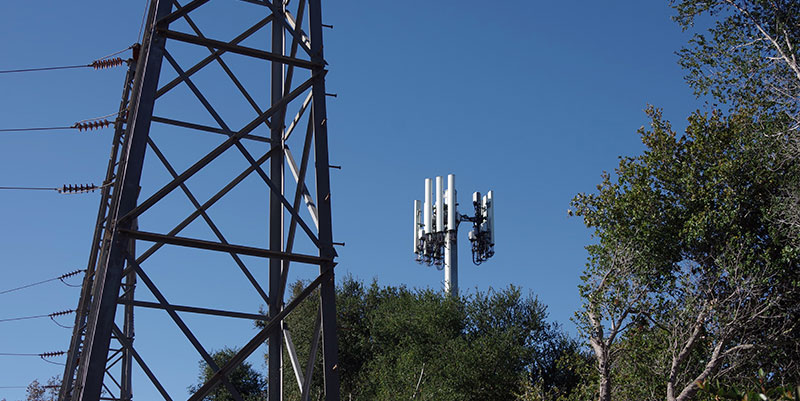Support and Empower Managers With Flexible Field Service Solutions
Choosing Your Path to Success
Today’s field service managers have a lot to manage. With mounting customer expectations, more mobile devices and data than ever, and pressure from competitors, most have already realized the need for increased technology support.

In a recent survey, 81% of managers said they plan to use some type of field service management solution within the next five to 10 years.1 But while that may seem like an obvious decision, success depends on knowing where to start and planning how to grow.
Field service companies like plumbers, HVAC or electrical service providers, landscapers, and anyone with a mobile workforce each have unique needs and challenges when choosing technology.
Fortunately, it’s possible to balance the risk, time and cost involved — by starting with what you need most now and building from there. The key is to find a solution that’s flexible and backed by personal support to see you through implementation and beyond.
Let’s take a look at three easy ways you can build the best possible field service solution for your business.
Stage 1: Connecting Vehicles
Investing time and money to find the right field service solutions for your company can frustrate everyone involved. Fortunately, it’s possible to get easy, early wins by starting with just one field service solution: fleet management.
Fleet management solutions include two initiatives: installing small plug-and-play GPS tracking devices in your vehicles and setting up reports that automatically deliver actionable insights based on data collected by the devices. As a manager, you go from not knowing where you’re making and losing money on the road to receiving reports on mileage, fuel consumption, GPS locations, idle times and even driver behaviors such as speeding and braking habits.
With GPS tracking devices in connected vehicles, you can:
- Evaluate and proactively rearrange stops on each route to save time and complete more work
- See all dispatched vehicles so you can send the right one to handle an extra service call
- Receive diagnostic reports and maintenance reminders automatically so you can perform proactive maintenance
- Instantly act on engine issues and emergencies before they become more expensive problems
Results 2:
- Increase productivity 10–15%
- Save 5–10% in total miles driven
- Reduce fuel expenses 20–25%
- Save 20–30 minutes per day per driver
- Reduce overtime hours 10–15%
Connecting your vehicles is a great way to get off the ground with field service technology. You’ll see improvement, you’ll feel more efficient and you can choose how and when to add on from there.
Stage 2: Connecting Vehicles and People
A recent survey reported that 61% of field service industry leaders cite “connectivity for technicians” as a major growth and technology strategy that’s working for their business.3 Solutions such as mobile forms, Push-to-Talk and cloud-based communication capabilities help you and your employees work together and communicate with your customers easily and efficiently.
With these communication solutions, your employees can2:
- Track time effortlessly, with GPS-verified accuracy, using mobile time cards that eliminate paper
- Collect customer data, provide quotes or process transactions digitally for better customer service
- Send and receive instant updates using walkie-talkie functionality on their smartphones to keep work moving
- Route office calls to their smartphones, or to the appropriate employee, so customer calls are never missed
Results:
- Reduce payroll errors and time required for corrections by 60–80%4
- Save 49 minutes a day on communications5
- Increase customer satisfaction up to 42% by improving access to reps6
By connecting vehicles and people, you’ll reduce miscommunications that can cost the average small business up to $420,000 per year.7 Improving communication and collecting more accurate data go hand-in-hand toward improving your bottom line and maintaining a loyal customer base.
Stage 3: Safeguarding Your Connections and Theft Prevention
As you become a more connected company, you’ll want to safeguard your assets and data against virtual and physical hazards. 70 million wireless phones are lost each year.8 A broken device typically leads to employees losing 4-8 hours of productivity.9 A motor vehicle is stolen every 41 seconds in the United States.10 If any of these are a particular concern for your business, you may consider adding field service solutions such as fleet management with its Geo-fencing capabilities, mobile device management (MDM) and rugged devices to help you monitor, secure and protect the things that matter to your business.
With protective solutions like these, you can:
- Get an alert when a vehicle travels outside a set geographical zone so you can notify authorities quickly and increase your chances of vehicle recovery
- Remotely lock or wipe devices to protect your company information and your customers’ private data
- Receive notification when viruses or malware threaten data security, so you can take immediate action
- Safeguard devices from harsh environments, weather, impact and vibration to prevent damage and lost productivity
Results:
- Save up to 15% on total cost of device ownership11
- Increase the chances of recovering a stolen vehicle to as high as 90%12
- Reduce the risk of data loss … even though employees share an average of six passwords with others13
Field service management solutions are not overwhelming when you use a steady, staged approach. And if you need more support throughout the process, choosing a provider that offers boots-on-the-ground, local support will serve your field service–based business well.
Subscribe to our newsletter
References
- Field Service USA. “Future Trends in Field Services.” 2016. Frost & Sullivan. “Global Connected Truck Capabilities.” 2016.
- Field Service USA. “5 Future Trends in Field Services.” 2016.
- ONEMINT. “Why We Love Payroll Automation (and you should too!)” 2018.
- Persaud, Christine. “Five Benefits of Push-to-Talk.” Bell, 2014.
- Bourne, James. “How unified cloud communications can benefit productivity and customer satisfaction.” Cloud Tech, 2017.
- TouchCast. “The cost of poor internal communications in business.” 2018.
- Olenski, Steve. “Is The Data On Your Business’ Digital Devices Safe?” Forbes, 2017.
- Mainelli, Tom. “Pay Now, Save Later: The Business Case for Rugged Devices.” IDC, 2016.
- National Highway Traffic Safety Administration. “Vehicle Theft Prevention.” Accessed February 4, 2019.
- Panasonic Business. “Panasonic Executive Summary: Pay Now, Save Later.” 2017.
- Sly, Cindy. “Theft Recovery-Tracking the Vehicle.” P&A, 2012.
- LastPass. “The 2018 Global Password Security Report.” 2018.






